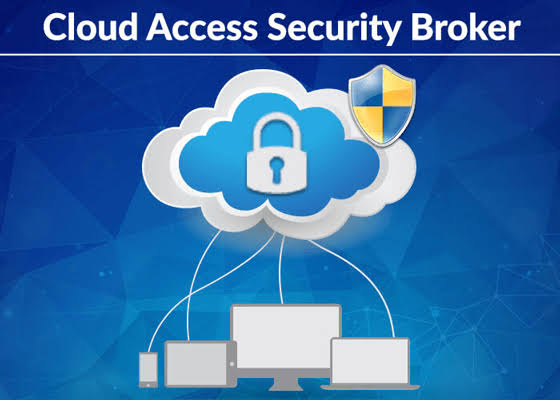
Cloud Access Security Brokers or CASBs are gaining imminent popularity in the IT sector. CASB vendors provide enhanced solutions to manage the encryption and authentication of data in cloud applications or services. Cloud-based software is essentially a shared platform, and hence the sensitive data stored in it is exposed to potential cyber threats. Modern-day cybercriminals can hack into the cloud collaboration platform to steal confidential files or documents. CASBs give you deeper visibility into the cloud operation. CASB solutions allow you to monitor and control the transfer, management, storage, and retrieval of data on cloud servers.
Before the CASB solution was introduced to the IT world, enterprise security managers had minimal visibility into the cloud data. However, in recent times CASB is used to address the gaps in data security across software-as-a-service (SaaS), platform-as-a-service (PaaS), and infrastructure-as-a-service (IaaS) environments. The exponential growth of the CASBs directly affects their ability to secure data across all the endpoints. According to the studies which analyze the global cloud access security broker (CASB) application market status CASB market is projected to grow from USD 8941.1 million to USD 36910 million by 2026 with a CAGR of 22.2%.
CASB solution providers deliver security features across multiple clouds on various platforms. SaaS solutions require constant monitoring to secure user privacy and corporate data in subscription-based cloud applications. This ensures that unauthorized third-party sources do not access sensitive data. CASBs can actively check the data breach in real-time and passes on the information to the system administrators to eliminate the potential threats.
If you want to purchase a CASB solution, you need to follow the listed steps to make the right choice.
- You need to primarily curate a list of the applications and software you want to integrate with your CASB project. This is a minimal requirement to initiate the integration process. You can check the CASB solution’s functionality within this range of applications before you widen its scope.
- To deploy the CASB solution, identify if you want to integrate the solution with other existing services, like the identity-as-a-service (IDaaS)/single sign-on (SSO) tools.
- Authentication of the cloud access process should not be based on the simple binary of “yes” or “no.” A deeper understanding of integration that involves a comprehensive understanding of how and when you should incorporate the complex risk-based authentication will improve the data security process. You need to determine if you want to merge your CASB solution into this authentication process.
- Identifying the if’s and how’s of the field-level data encryption and authentication that your product will support is essential.
- Check out the multimode CASBs. A multimode deployment (aka traffic steering) CASB solution gives you the flexibility to cover several use cases. It also makes sure that you understand the limitations of the product in the various operating modes.
- Identify if the products integrate seamlessly with the existing security systems, be it web gateways, application firewalls, DLP tools, and email providers. Thoroughly examine the CASB solution to check if it offers advanced solutions compared to what you already have installed in your company.
- Determining the budget for your CASB solution is essential. You need to get an estimate of the costs the solution will incur. Check the annual cost for simple installations of a few cloud apps instead of extensive coverage for multimode unlimited cloud apps. Ask your team what will suit your business requirements better.
- You also need to ensure that the CASB solution is compliant with your company’s enterprise protocols for stable and durable compatibility.
Multiple Use Cases of CASB
Secure Shadow IT
CASB solution is deployed by the companies to identify, monitor, and secure the shadow IT. Shadow IT involves hardware, software, application, and network servers that are not managed by the organisation’s centralized IT team. Shadow IT does not necessarily adhere to the security, compliance, and governance policies of the organizations. CASB’s solution protects the company’s data by blocking the access of the cloud data by any unauthorized apps.
Govern Device Usage
Another critical use case of CASBs is to monitor the user activity thoroughly. Hence, access to cloud data is checked across various platforms. This helps to detect and prevent fraudulent activities in the cloud in real-time.
Secure Data
CASBs protects the data from exfiltration. Hence, it checks if the data is being transferred from sanctioned to unsanctioned cloud software. CASB solutions enforce various policies which are compliant with the organizations. This solution enforces conditional activity-level policies to apply the appropriate encryption to the corporate data.
Block Malware
CASBs acts as a firewall to protect cloud applications from malware attacks. It detects and alerts organizations about suspicious logins, excessive downloads, uploads, or unauthorized file sharing.
To Conclude:
CASB solution checks and filters cloud access traffic. It comprehensively checks the data to devise suitable network security solutions. This helps organizations gain deeper visibility into the transfer, storage, management, and access of data on cloud collaboration platforms.